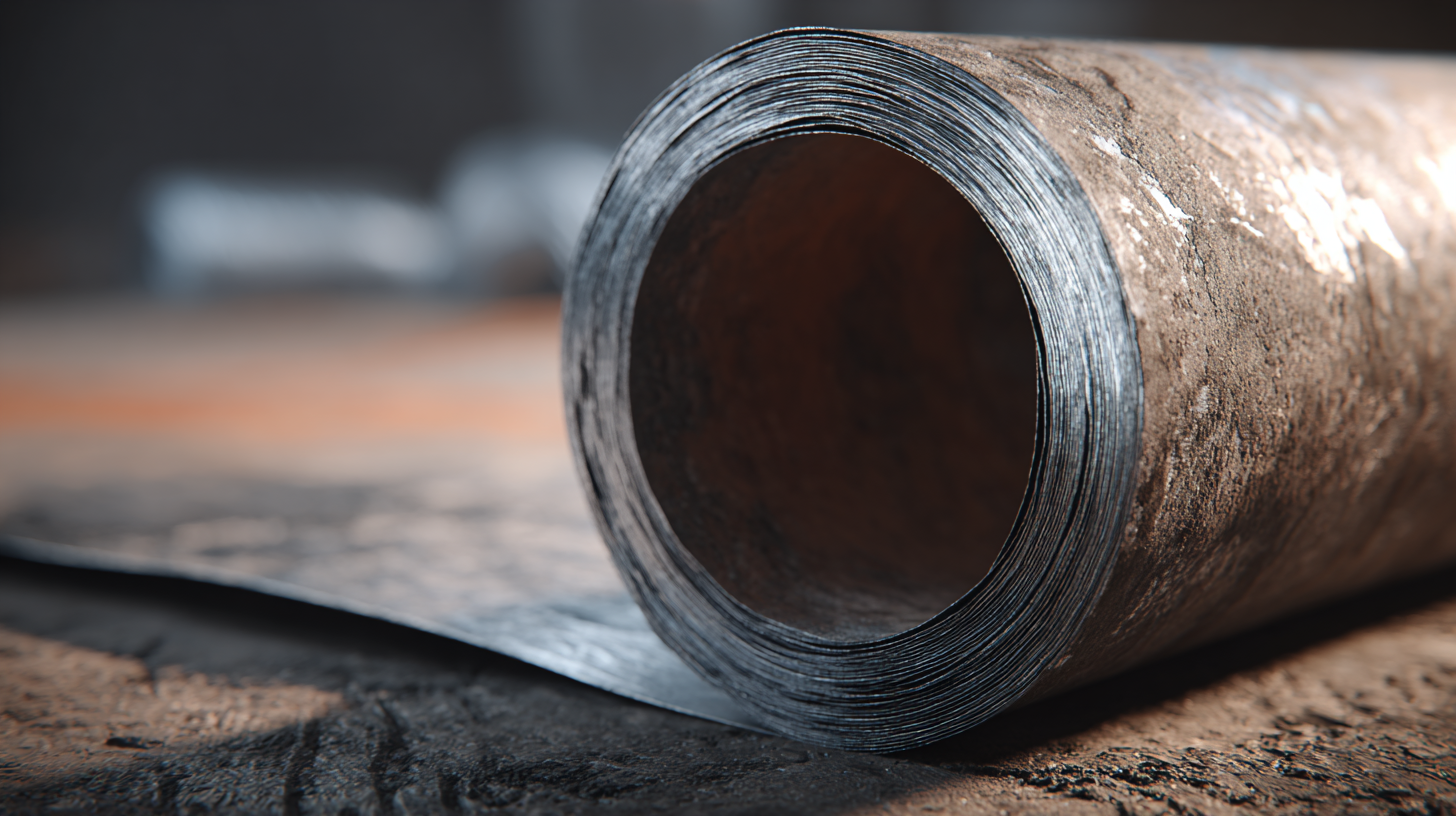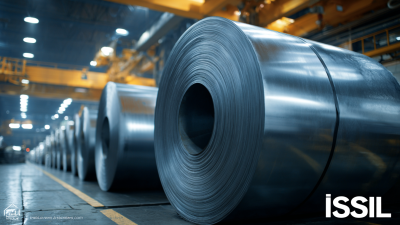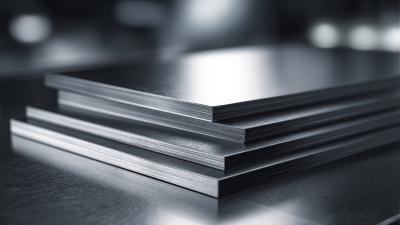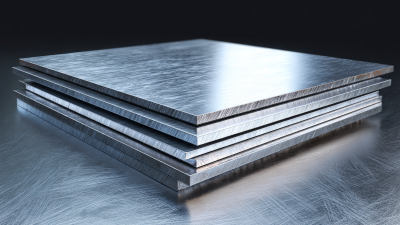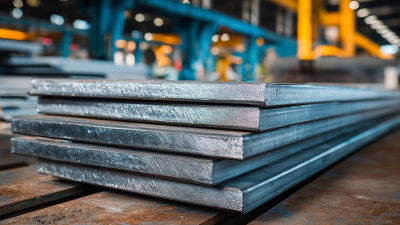
The thickness of Steel Sheet plays a crucial role in determining the structural integrity and durability of construction materials. According to a report by the American Institute of Steel Construction, variations in steel sheet thickness can significantly influence the load-bearing capacity and overall performance of structural components. For example, thinner sheets may be more susceptible to buckling under compressive loads, while thicker sheets provide enhanced resistance against impact and fatigue. Furthermore, the World Steel Association highlights that optimizing Steel Sheet thickness can lead to sustainable construction practices by reducing material waste and improving resource efficiency. This paper aims to delve into the nuanced relationships between steel sheet thickness and its implications for construction safety and longevity, ultimately emphasizing the necessity for precise engineering specifications in modern building projects.

The thickness of steel sheets plays a pivotal role in determining the structural integrity and durability of construction projects. When assessing steel sheet thickness, it is essential to consider factors such as load-bearing capacity, resistance to environmental stressors, and potential for corrosion. Thicker steel sheets generally offer enhanced strength and can withstand higher stress loads, making them ideal for heavy-duty applications like bridges and high-rise buildings. However, there is a delicate balance to maintain; excessively thick sheets may introduce unnecessary weight, leading to increased material costs and challenging handling during installation.
Moreover, the impact of thickness on structural integrity is closely tied to design specifications and safety regulations. Engineers must evaluate the intended use of the structure and environmental conditions when selecting steel sheet thickness. For instance, in coastal areas where corrosion is a concern, using thicker sheets may provide additional protection against rust and degradation. The manufacturing process and methods of assembly also play critical roles in how effectively steel sheets perform in a given structure, underscoring the importance of aligning thickness choices with the overall construction strategy.
This chart illustrates the relationship between steel sheet thickness and its impact on structural integrity and durability. Different thickness levels are correlated with various material properties that influence construction outcomes.
The selection of materials in construction is critical for ensuring the long-term durability and structural integrity of steel sheets. According to the American Institute of Steel Construction (AISC), steel sheet thickness can significantly influence both resistance to environmental factors and overall strength. For instance, sheets with a thickness of 1/4 inch or greater provide enhanced resistance to buckling and corrosion, which is essential in harsh climates where moisture and temperature fluctuations can accelerate deterioration.
Furthermore, industry reports indicate that higher quality steel grades, such as ASTM A992 or A572, demonstrate superior performance in durability tests. A study by the Steel Construction Institute highlights that using thicker, high-grade steel sheets can reduce maintenance costs by up to 30% over the lifespan of a structure compared to using standard-grade steel. This data underscores the importance of making informed material choices, as the initial investment in quality steel can lead to substantial savings in the long run while ensuring the integrity of the construction.
| Steel Sheet Thickness (mm) | Tensile Strength (MPa) | Yield Strength (MPa) | Durability Rating (Years) | Corrosion Resistance (Rating) | Applications |
|---|---|---|---|---|---|
| 1.5 | 350 | 250 | 10-15 | Moderate | Residential Construction |
| 2.5 | 450 | 300 | 15-20 | High | Commercial Structures |
| 3.0 | 550 | 400 | 20-25 | Very High | Industrial Applications |
| 4.0 | 600 | 450 | 25-30 | Excellent | Heavy Structures |
| 5.0 | 700 | 500 | 30-35 | Superior | Bridges and High-Rise |
The thickness of steel sheet plays a crucial role in determining the load-bearing capacity of structural components in construction. According to the American Institute of Steel Construction (AISC), increasing the thickness of steel sheets can significantly enhance their ability to withstand both static and dynamic loads. Research indicates that a mere increase of 1 mm in thickness can result in a nearly 15% improvement in the yield strength of a steel member, effectively allowing it to support greater loads without risk of failure.
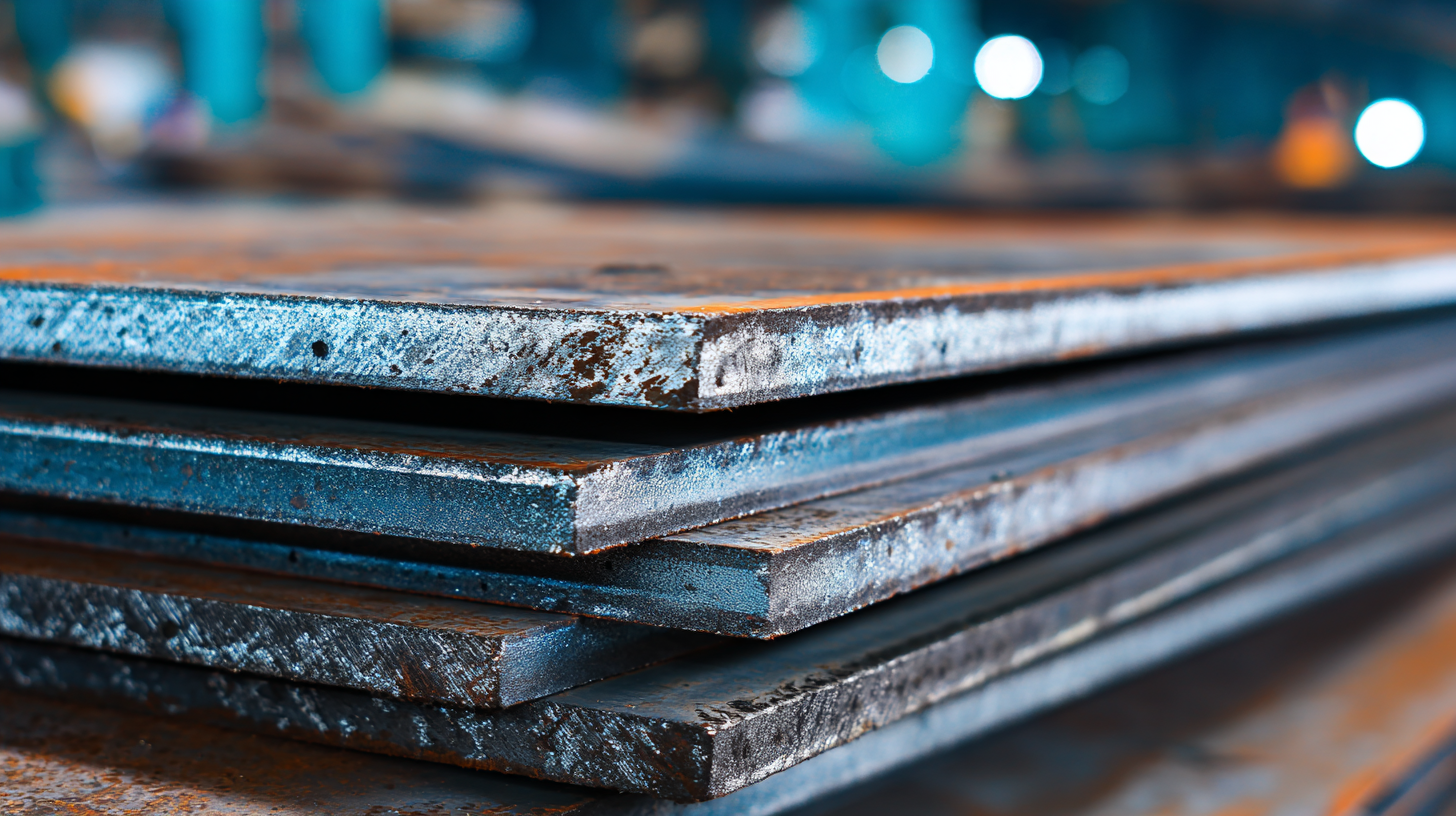
Furthermore, the impact of thickness variations becomes even more critical under varying environmental conditions. A report from the World Steel Association suggests that structural elements constructed with thicker steel sheets exhibit improved durability and corrosion resistance, contributing to long-term sustainability in construction applications. For instance, steel sheets with a thickness of 8 mm or more are less susceptible to buckling under heavy loads compared to their thinner counterparts.
This characteristic not only ensures structural integrity but also reduces maintenance costs and extends the lifespan of a building. Overall, careful consideration of steel sheet thickness is essential for optimizing load-bearing capacity and enhancing the overall durability of construction projects.
The thickness of steel sheet plays a pivotal role in determining the corrosion resistance and overall durability of structures in construction. Recent advancements emphasize that thicker sheets offer enhanced protection against environmental impacts, which is crucial for longevity. A study presented at Corrosion & Prevention 2023 highlights that integrating advanced coatings can further augment this protection by creating barriers that minimize direct exposure to corrosive agents. The interplay of increased thickness and innovative materials directly correlates with an extended lifespan of construction elements, particularly in challenging environments.
Tips: Consider specifying the gauge of steel sheets used in critical applications, as different thicknesses exhibit varying resistance to corrosion. For instance, structures exposed to marine environments may benefit from using thicker sheets, which have shown to significantly mitigate corrosion rates compared to their thinner counterparts.
Moreover, recent evaluations indicate that enhancing wall thickness, coupled with the use of moisture barrier layers, can reduce energy consumption in facilities, thereby promoting sustainability. As industries shift towards sustainable practices, investing in thicker, high-performance materials is not only beneficial for structural integrity but also for reducing long-term operational costs. Adopting such methods can lead to a more resilient infrastructure that withstands the test of time and environmental challenges.
When it comes to the construction industry, the thickness of steel sheets plays a vital role in ensuring structural integrity and durability. According to a report by the American Institute of Steel Construction, variations in steel sheet thickness can significantly affect load-bearing capacities and resistance to environmental stressors. For instance, a study revealed that steel sheets with a thickness exceeding 6mm showed a 30% improvement in load resistance compared to thinner alternatives. This highlights the necessity of adhering to standard specifications in steel sheet applications.
**Tip:** Always refer to the latest industry standards, such as those outlined in ASTM A572 or A992, when selecting steel sheets for construction projects.
Moreover, quality assurance during the manufacturing process is crucial. Implementing rigorous testing methods, including ultrasonic thickness measurements and tensile strength evaluations, ensures that the steel sheets meet the required specifications for thickness and quality. The National Institute of Standards and Technology recommends that manufacturers carry out these tests at multiple intervals throughout production.
**Tip:** Collaborate closely with suppliers to establish a quality control checklist that includes material certifications and regular audits. This proactive approach can mitigate risks associated with substandard materials.
